Composting in the natural process of layering organic materials which then break down and decompose. This decomposed material is loaded with nutrients that can be added to your soil for a healthy garden and flowers. Composting is an easy way to produce organic material which is a healthy component of good soil.
- Overview of the Best Composters
- What are Composters used for?
- Methods of Composting
- Types of Composters
- Selection Guide: What to Look for in Composters
- Top 8 Composters of 2023
- Frequently Asked Questions
- How does composting work?
- What can I add?
- What should I not add?
- Can I compost pet waste?
- How long does it take?
- How can you tell when the compost is finished?
- Do you still need fertilizer if you use compost?
- Why does the compost smell bad?
- How do I keep pests out?
- Can I compost banana peels?
- Can I put coffee grounds in compost piles?
- What do I need to do to care for my compost?
Overview of the Best Composters
Below is a table featuring 8 of the best composters of 2023. They are organized by type and then descending by price. The features of each composter are listed to help you compare and find the best composter for you.
What are Composters used for?
There are many different ways to compost and many different containers to keep the material in while it decomposes. The most common types of composters are bins.
Methods of Composting
Bin
The most common type of composting is in a bin. When composting with a bin organic materials are layered into a structure made to hold the material. The bin can be opened or closed at the top and the material inside can be turned or mixed periodically to speed up the process. The bottom is typically open to the bare ground to allow worms and other beneficial critters access to break down the scraps. Bin composting is a good method for people with limited yard space or those that only wish to compost kitchen scraps.
Heaps or Piles
You don’t need to purchase a composter to reap the benefits of composting in your backyard. One method of composting is to heap or pile organic materials in a designated spot in your yard. This is a good option for someone that doesn’t want to purchase or build a bin and has a lot of space in their yard. If the material is not adequately aerated it can take a while for the materials to break down. Without an enclosure to prevent critters from getting in the pile may attract pests.
Pit Composting
Similar to pile composting, pit composting does not require a bin. Pit composting consists of digging trenches, or pits and burying the organic material. The pit should be no more than 18 inches deep and 3 feet wide. The material should be covered with at least 8 inches of dirt. This is a good method for enriching an area in which you will later plant. This method is good for people that don’t like the sight and smells of compost. If you produce a lot of organic material, however, this may not be the best method for you as there is a limit to how much you can bury.
Sheet Composting
Sheet composting does not require a bin and is a good method for people that don’t have space for it. It involves layering thin layers of material, such as grass or leaves, over an area and then mixing it in. The material can be mixed in with a tiller or hoe. The layer should be about 2 to 4 inches thick and is best completed in the fall. That gives the material plenty of time to break down before spring planting.
Types of Composters
Enclosed Bin
An enclosed bin is the most basic composter you can buy. It is typically made from plastic so it won’t rot like wood or rust like metal. Material is piled into the bin and the entire thing is closed with a lid. The lid deters animals and keeps the rain off. If compost gets too wet it can be hard for oxygen to work its way through and break everything down. This type of composter is low maintenance as it does not require turning. The lack of aeration, or turning, can cause the process to take longer, however. Expect compost to turn into soil in about 6 to 12 months with this type of composter.
Rolling Bin
A rolling bin is an enclosed bin with wheels. It can be rolled around your yard, loaded with waste and rolled back. The bin can be tumbled every so often to aerate the pile and increase the decomposition. This is a good bin for people that don’t like the sight of piles. The bin can be rolled out of sight when not in use. One bin is usually sufficient for an average-sized yard to be filled with kitchen scraps and yard waste. These type of bins are low-maintenance and make aeration easy. They can be heavy when full, so moving may be difficult.
Tumbler
A tumbler composter is an enclosed bin that is specially made to spin which easily mixing the material. This aeration helps to supply the bacteria that is breaking down the scraps with the oxygen they need which in turn speeds up decomposition. These types of bins are good for homeowners that don’t have the extra space for a permanent compost bin. They come in a variety of sizes and are generally stored off the ground which is an advantage if you have trouble bending. On the downside once the bin is full new material cannot be added until it is all broken down.
Worm Bin
A worm bin is a special type of composter that uses worms to aid in decomposition, called vermicompost. This method is only used for kitchen scraps. Red worms eat through the scraps and turn them into rich soil. This type of composter is great for people with limited space such as apartments. The worm bin can be stored under the sink or in the garage. Once the bin is running there is little maintenance required. The worm composters are designed with trays which allow the worms to eat their way up to the food and leave the soil, or worm castings, behind. The bin needs be kept in a place that will remain between 40 and 80 degrees Fahrenheit. If you live in a climate that freezes in the winter you will need to bring your worms
Countertop Pail
A countertop pail is a temporary storage bin for kitchen scraps. You can fill up the bucket as you are cooking and later transfer to your permanent location. These bins are closed to prevent your kitchen from smelling like compost and are handy so you don’t have to walk out to your composter several times a day. This are good for family that produce a lot of kitchen scraps and have limited space.
Selection Guide: What to Look for in Composters
There are many types of composters available to help you make nutrient-rich soil known as black gold. The ideal composter will fit the size of your yard, have the holding capacity that meets your needs, and is strong enough to hold up to the elements.
Size
The average compost bin will be about 1-3 foot in diameter. Most bins are not meant to be moved as they have an open bottom. Rolling bins can be moved around the yard, but ultimately need a resting spot. Compost tumblers can be moved, but once full it can be difficult. If you don’t have dedicated yard space for a permanent bin consider pit composting, sheet composting, or vermicomposting.
Capacity
The optimal compost pile should be about one cubic yard, 27 cubic feet, or about 3 feet long, 3 feet wide, and 3 feet deep. This is the minimum size for the pile to reach optimal temperature to break down the material. Piles smaller than this will still work, but it may be more slowly. Enclosed bins usually have a larger holding capacity of between 7 and 20 cubic feet or 80-150 gallons, depending on the model. Tumblers and rolling bins will typically have a small capacity to make them more mobile and range between 4 and 15 cubic feet, or 30 to 80 gallons. Closed bins, however will retain temperatures better so a smaller pile is sufficient.
Durability
Compost bins, tumblers, and rollers need to be durable in order to stand up to the elements and for tumblers they need to be able to stand up to the constant use. Tumblers are often built with thicker walls to account for the movement. This helps make them more weather proof. You’ll want to be sure the supporting legs of and the central axis connection is strong enough to hold up to many years of use. If there are handles on the drum make sure they are not flimsy. A better option may be the indentations some tumblers have molded into the drum to use as handles. With the indentations there are fewer parts and a decreased chance of breakage.
Enclosed bins typically have thinner sides than tumblers because they only need to contain the material rather than support its weight. The thin plastic may become brittle in cold weather or after years of sunlight exposure and may chip or break with hard use. Look for plastic that is protected from UV damage.
Functionality
Compost bins should be made to suit their function. Bins should be large enough to allow a pitch fork to turn the pile. Tumblers and worm bins will not need to be turned with a pitchfork. Bins should also have some sort of access point to retrieve the soil when compost is complete. Some compost bins have a board that slides open at the bottom to allow you to shovel or scoop out the completed compost. Tumblers should be easy to turn when full. Larger models, ones that hold 9 cubic feet, may become difficult to turn when 2/3 full. Tumblers that are horizontally mounted are easier to spin when full.
Top 8 Composters of 2023
Below is the list of the best composters of 2023. They are organized by type along with a short description of the composter as well as the pros and cons of each bin.
Envirocycle Compost Tumbler
The Envirocycle composter is a tumbler that was made to look good. The tumbler has a compact design which will fit nicely in your yard or on your deck if you short on space. The all-in-one composter combines a drum to collect solids and a base in which you can collect liquid known as compost tea. Compost tea is a liquid made from compost that is loaded with nutrients to be added to plants and flowers. The drum rotates on the base and the base collects the liquid. The drum is made from 100% recycled plastic and is BPA free as well as UV and antioxidant protected. You won’t have to worry about chemicals leaching into your compost or the plastic becoming brittle in the sun.
The door on the drum opens with a snap latch and is easy enough to open with one hand. Vents are included to help aerate the compost. The groves on the drum are the handles to turn it. Turn the composter 3 full revolutions every 3 days. Once the drum is full it should take 4 to 8 weeks for the compost to mature and fully break down.
The drum has a holding capacity of 35 gallons and the base can hold 2.5 gallons of water. Two Envirocycle drums work very well as a dual batch compost tumbler system. Because the compost breaks down so quickly with the drum one drum can be full and “cooking” while you fill the second drum. Once the first is empty use that to fill up with scraps and waste. The drum and base come full assembled.
- Material: 100% recycled plastic
- Capacity: 35 gallons
- Type: Tumbler
- Price: $$$
- Pros: Easy for dual batch, creates compost tea
- Cons: Can’t harvest compost tea if bin is full
Tumbleweed Compost Tumbler
The Tumbleweed Compost Tumbler is a small compost bin tumbler making it ideal for small yards, decks, porches, or even garages. It features a drum made from 100% recycled plastic and spins horizontally on a powder-coated frame with a stainless steel breaker bar. The frame conveniently has wheels so you can roll it to the garden to empty or fill up. The plastic drum is UV protected so it can easily sit in the sun without any damage. The drum is vermin proof and being enclosed it also keeps the whole process mess free. The drum should be turned every few days and will produce rich compost in 4 to 6 weeks.
- Material: 100% recycled plastic drum, steel frame
- Capacity: 140 L or 37 gal
- Type: Tumbler, Rolling
- Price: $$
- Pros: Compact size is easy to tumble
- Cons: Assembly required
Manits Composter
The Mantis Composter is a large compost tumbler made of rust-resistant galvanized steel. The frame as well as the drum are durable and built to last. The drum holds up to 88 gallons of waste and spins horizontally on the frame. The dimensions of the drum have been professionally calculated to produce a heat core which helps speed up the process. Air vents are included to assure unimpeded air flow. The handle is gear-driven to make it easier to spin when it is full as well as ensure it will not break. Spin the drum five times daily and the compost will be ready in 4 to 6 weeks. The door is removable to allow easy access to the drum when loading or unloading.
- Material: Galvanized steel
- Capacity: 88 gallons
- Type: Tumbler
- Price: $$$$
- Pros: Large capacity, easy to spin when full
- Cons: may rust over time
Yimby Compost Tumbler
The Yimby tumbler composter body is made from BPA-free, UV-protected polypropylene that spins horizontally on a galvanized steel frame, which is rust resistant. The inside of the bin is separated into two parts. When the first side is full it can be left alone to decompose while you fill the second side. By the time the second side is full the first should be ready to remove and start filling again. The inside of the drum has deep fins to help break up clumps that may form. The drum also features adjustable air vents and with frequent tumbling your compost can be ready as quickly as 2 weeks. The removable door slides shut for your convenience. Turn the tumbler 5-6 times every 2-3 days for best results.
- Material: Recycled polypropylene drum, galvanized steel frame
- Capacity: 37 gallon
- Type: Tumbler
- Price: $
- Pros: Two chambers make it easy to use dual batch composting method
- Cons: May not be secure on the frame
Suncast Tumbling Composter
The Suncast Tumbling composter consists of a drum that spins vertically on a galvanized steel frame. The frame has a sturdy base that will stay put when in use and is rust resistant. The drum is made from durable plastic and comes with a lid that latches closed. The lid is large which makes it easy to fill and empty the bin. Turn the drum regularly and the material should be decomposed in 3-4 weeks.
- Material: Plastic drum, galvanized steel frame
- Capacity: 48 gallon
- Type: Tumbler
- Price: $
- Pros: Large lid makes it easy to access compost
- Cons: Assembly required
FreeGarden Earth Bin
The FreeGarden Earth Bin is an enclosed bin that covers a circle 19.5 inches in diameter. The bin has a hold capacity of 82 gallons. The bin closes with a lid that is pest and animal resistant and twists to allow you to adjust the ventilation. At the bottom of the bin is a door which allows you to access the compost on the bottom that is fully decomposed. The bin is made of 100% recycled plastic and the simple design makes it easy to assemble. The bin is supplied with stakes to ensure it will stay put.
- Material: 100% recycled plastic
- Capacity: 82 gallons
- Type: Enclosed Bin
- Price: $116
- Pros: Large capacity, low maintenance
- Cons: grounding stakes not very long
Presto Compost Bin
The Presto Compost Bin is a large compost bin with a low-cost system. The bin is made of a plastic mesh that can be adjusted anywhere from 1 to 3.5 feet in diameter. There is no bottom or top to the bin so it is easy to move. This is a good bin for people with large yards and lots of waste and those wishing to use heap composting. The bin can be filled then the outer mesh can be removed to another location while the first pile cooks. The pile will break down quicker if turned frequently, about every two weeks. The bin is easy to set up, take down, and move.
- Material: Plastic, 50% recycled.
- Capacity: 216 gallon
- Type: Bin
- Price: $
- Pros: Large capacity
- Cons: No stakes
Eco Kitchen Compost Pail
The Eco Kitchen Compost Pail is a compost collector for the kitchen. There are notches on the back to allow the pail to be mounted inside a cabinet or on the wall in an out-of-way place. The compact size is perfect to store the pail under the sink, but has a large enough capacity to hold several days’ worth of scraps. This is particularly convenient in the winter when running kitchen scraps out to your compost daily is not ideal. The pail closes with a snap-on lid to keep out pests such as fruit flies. Inside the lid is a carbon filter meant to reduce odors. The pail is supplied with a handle to made carrying the waste to your composter easy.
- Material: High density polyethylene
- Capacity: 2.4 gallon
- Type: Counter Pail
- Price: $
- Pros: Includes filter to reduce smell, dishwasher safe
- Cons: Filter needs to be replaced
Frequently Asked Questions
How does composting work?
Organic materials are broken down and decomposed by bacteria, worms, snails, fungi, and other insects in the soil. Bacteria is the main decomposer and works by breaking down plant matter and producing carbon dioxide and heat. These microbes need oxygen which is why it is so important to aerate your pile. As the bacteria produce heat the temperature of the pile increases which attracts other microorganisms. Finally larger critters such as worms, slugs, snails, and insects begin to consume the decomposing matter. The excrement of these larger improve the compost’s texture and make it crumbly.
What can I add?
A healthy compost pile will have a good mix of green and brown materials providing nitrogen and carbon. This ratio is important to the bacteria and other microorganisms doing the heavy lifting in your pile. The green materials provide nitrogen which provides protein and other essential elements for cell structure to the bacteria. Green materials are things that are generally fresh and moist such as fruit and vegetable scraps, egg shells, green leaves, grass clippings, flower cuttings, tea leaves, manure, coffee grounds. The brown materials provide carbon to the bacteria which is an energy source. Brown materials are those that are generally dry such as brown leaves, straw or hay, shrub pruning, pine needles, wood ash, shredded cardboard or newspaper, corn cobs and stalks, sawdust, wood chips, and dryer lint.
The pile should have an approximate ratio of 30 parts carbon to 1 part nitrogen. You can maintain this with a ratio of 2 parts brown materials to 1 part green materials when you start your pile. As you add to your pile keep a ratio of 1 part brown to 1 part green. Too much carbon results it the pile breaking down slowly. Too much nitrogen and the pile may become smelly.
What should I not add?
Do not add meat, bones, fish scraps, or dairy to your compost pile. These items will attract pests. You should also avoid adding weeds or diseased plants. The seeds of the weeds may begin to grow in your pile and the diseased plants may spread to other healthy plants as you spread your decomposed compost in your garden. Sawdust should only be added if it comes from untreated wood. Be sure to mix the sawdust well when it is added to avoid clumping.
Can I compost pet waste?
Do not add pet manure from cats or dogs as it may spread disease. Manure from animals that are herbivores, such as rabbits, guinea pigs, hamsters, gerbils, sheep, and chickens can be used and is a great source of nitrogen.
How long does it take?
Depending on how well you take care of you pile, decomposition can take anywhere from 1 month to 1 year. A pile that is turned frequently can break down as quickly as 4 weeks. Piles that aren’t turned as often may take up to 12 months to break down. It is not necessary for a pile to break down quickly, it is only convenient. Depending on the type of bin you select you might not be able to turn it often.
How can you tell when the compost is finished?
What the compost will look like when it is done depends on what you plan to use it for. Compost that is partially decomposed means you can still recognize some of the original material. Add partially decomposed compost to your garden as a soil conditioner. Do this in the fall so the material will have time to finish decomposing before you plant again in the spring. You can also use partially decomposed compost as a surface mulch in the garden, flower beds, and around trees and shrubs. This will help the plants retain moisture and prevent weeds from growing.
Compost that is mature is that which is dark, crumbly and smells like the earth, not ammonia or rotten eggs. The material should have decreased in volume to one third of its original size. Use mature compost as an add-in to your soil during the growing season.
Do you still need fertilizer if you use compost?
Any easy way to think about compost and fertilizer is this: compost feeds the soil and fertilizer feeds the plants. Compost does provide nutrients to plants, but it is small doses over a longer period of time, usually the growing season. If your soil is particularly nutrient-deprived or you are growing plants that need a boost of nitrogen you may want to supplement with fertilizer.
Why does the compost smell bad?
A smelly compost pile means the ratio of nitrogen to carbon is off. If your pile smells like ammonia it means there is not enough carbon in your pile. Add carbon-rich, or brown materials to your pile. It also helps to mix-in or cover kitchen scraps as soon as they are added. Consider keeping a pile of leaves or grass clippings by your pile. When you add kitchen scraps cover them immediately with the grass clippings.
How do I keep pests out?
If you have an open pile the best way to deter pests is by covering food scraps with yard waste as you add the scraps. If you want an enclosed bin look for bins that are pest resistant.
Can I compost banana peels?
Banana peels are an excellent addition to any compost pile. They can also be buried or added directly to plants as a fertilizer. Roses, especially, love banana peels. To speed up the decomposition process you may want to cut your banana peels into smaller pieces before adding them to your pile.
Can I put coffee grounds in compost piles?
Coffee grounds, and their paper filters, can be added to compost piles. They are wonderful source of nitrogen. Unlike coffee, the coffee grounds are not acidic. The acid from the beans dissolves into the coffee leaving the pH neutral grounds behind.
What do I need to do to care for my compost?
For organic material to break down it needs three things, heat, moisture, and oxygen. The beginning stages of decomposition are done by bacteria. These bacteria need oxygen which is why it is so important to aerate your pile. These bacteria create heat and covering your compost or containing it in a bin will help trap the heat. The heat of the pile attracts other microorganisms which help break down the material. Finally, your pile needs moisture. It should be moist, and be well-draining. Too much water, and not enough have the same effect in that the decomposition process slows down. Some compost bins provide aeration with air holes. An active pile, however, should be able to create its own air flow. The heat it generates rises which then draws fresh air to the bottom.

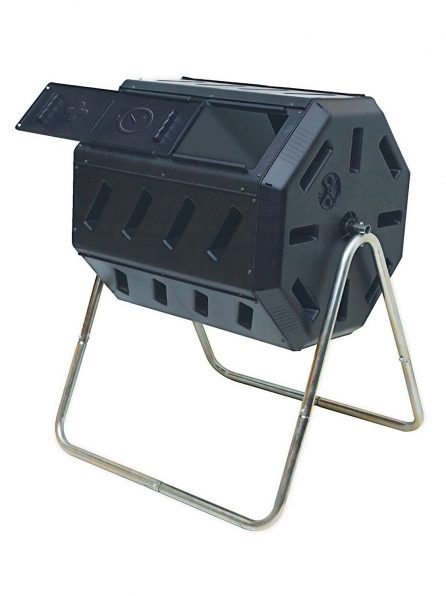
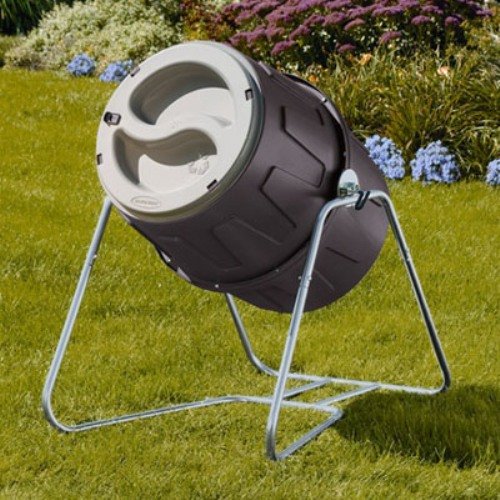 Click for Details
Click for Details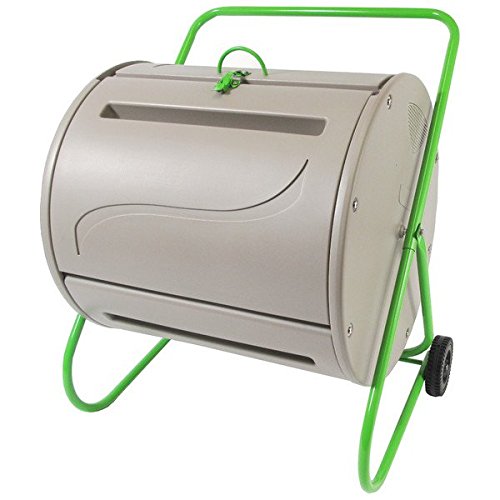 Click for Details
Click for Details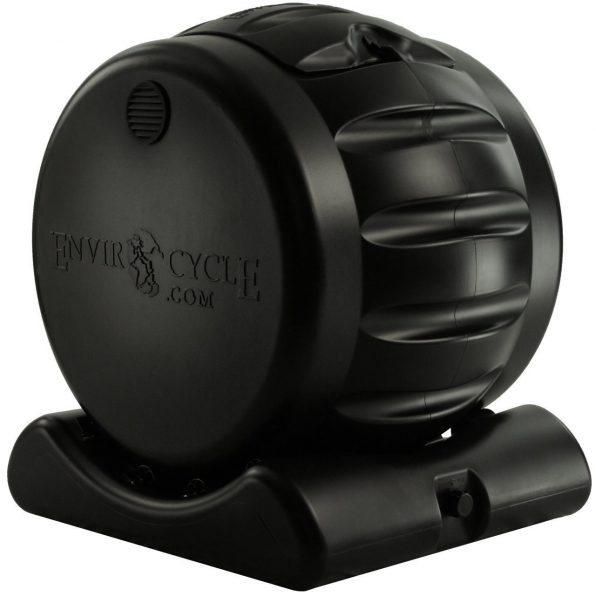 Click for Details
Click for Details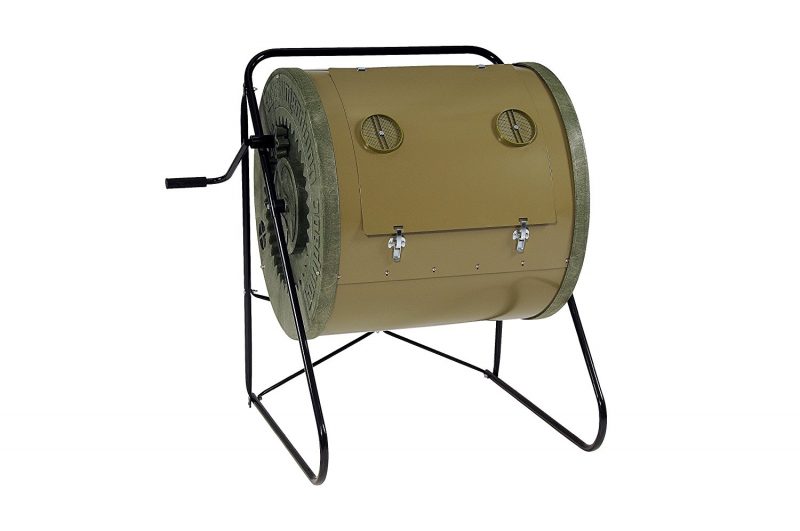 Click for Details
Click for Details Click for Details
Click for Details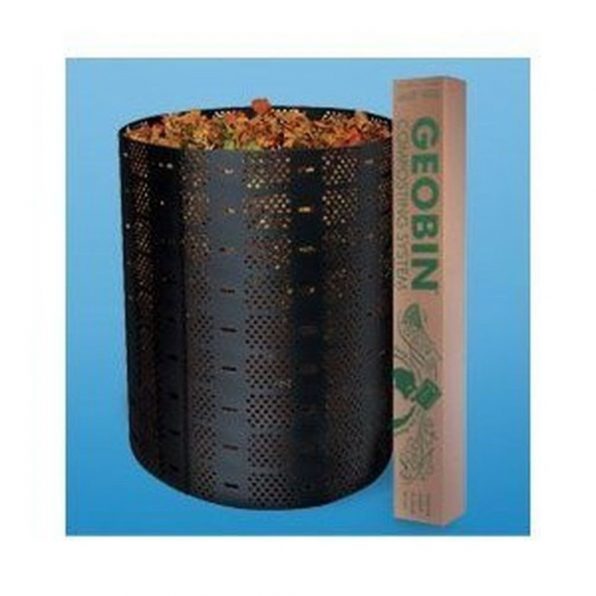 Click for Details
Click for Details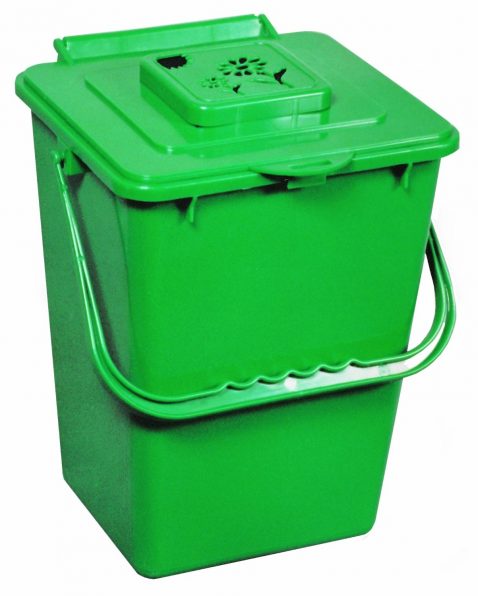 Click for Details
Click for Details
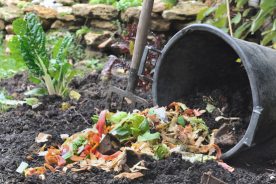
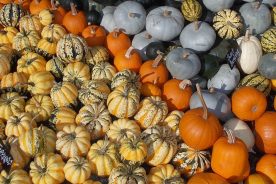

No Comments